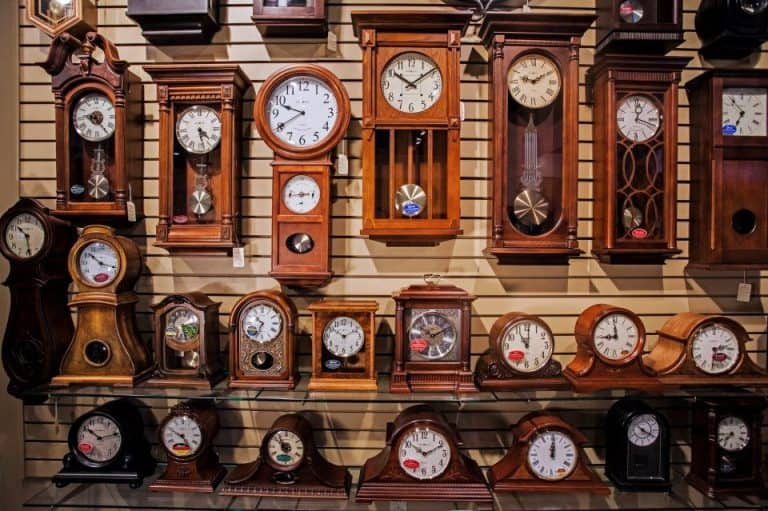🕰️ How Clocks Are Made: A Journey Through Timekeeping Technology
Clocks are some of the most fascinating inventions of humankind. From ancient sundials to ultra-modern atomic clocks, the journey of clock-making spans centuries and involves a blend of science, engineering, and art. But how exactly are clocks made today? What goes into crafting a precise, reliable timekeeping device? In this comprehensive guide, we will dive deep into the world of clock manufacturing, exploring both traditional and modern methods.

Table of Contents
🧭 1. A Brief History of Clocks
Before we dive into the manufacturing process, it’s essential to understand the evolution of clocks:
- Sundials (3000 BC): The earliest form of timekeeping, relying on the sun’s position.
- Water Clocks (1400 BC): Used in ancient Egypt, Greece, and China.
- Mechanical Clocks (13th Century): Introduced in medieval Europe.
- Pendulum Clocks (1656): Invented by Christiaan Huygens; more accurate than earlier types.
- Quartz Clocks (1927): Used the vibrations of quartz crystals for timekeeping.
- Atomic Clocks (1949): The most accurate clocks, using atomic resonance.
🏭 2. Types of Clocks and Their Components
A. Types of Clocks
- Analog Clocks
- Wall Clocks
- Desk Clocks
- Grandfather Clocks
- Digital Clocks
- LED/LCD clocks
- Alarm Clocks
- Smart Clocks
- Mechanical Clocks
- Wind-up clocks
- Pendulum-based designs
- Quartz Clocks
- Battery-operated
- Highly precise
- Atomic Clocks
- Used in GPS, satellites, and scientific experiments
🔧 3. Basic Components of a Clock
Regardless of the type, most clocks share common components:
- Power Source: Spring, battery, electricity, or gravity.
- Oscillator: Regulates time (pendulum, quartz crystal, etc.)
- Counter Mechanism: Counts oscillations to keep time.
- Display: Hands (analog) or numbers (digital).
- Housing/Case: Protects the internal components.

🛠️ 4. The Clock Manufacturing Process
Now let’s go step-by-step into the actual manufacturing process, primarily focusing on quartz and analog clocks (the most common today).
🧱 Step 1: Designing the Clock
Before manufacturing, the clock must be designed:
- Functionality: Is it analog or digital? Wall or desk?
- Style: Modern, vintage, minimalist, ornate?
- Size and Shape: Circular, square, rectangular, or artistic forms?
- Material Selection: Wood, metal, plastic, glass, ceramic?
Software tools like CAD (Computer-Aided Design) are used to design the parts precisely.
⚙️ Step 2: Manufacturing Internal Mechanisms
This is the heart of the clock, involving precision engineering.
A. Quartz Oscillator Production
- A quartz crystal is cut and shaped.
- It’s mounted into a small metal or plastic case.
- Wires connect it to the electronic circuit.
- When powered, it vibrates at 32,768 times per second (standard frequency).
B. Circuit Board Assembly (For Quartz & Digital Clocks)
- PCBs (Printed Circuit Boards) are made using soldering machines.
- Microchips and resistors are attached using Surface Mount Technology (SMT).
- Quality control checks the circuit’s stability.
C. Mechanical Gears (For Analog Clocks)
- Small gears (made of brass, steel, or plastic) are manufactured.
- Precision is key; even a small error can cause time drift.
- Gears are lubricated with special oils to prevent wear.
D. Stepper Motor Assembly
- Converts electrical impulses into mechanical motion.
- Controls the rotation of clock hands.
- Each second, the motor ticks once (or smoothly sweeps for some models).
🖐️ Step 3: Making the Hands and Dials
- Clock Hands:
- Made from lightweight metal or plastic.
- Painted or coated (often in black, gold, silver, or luminous paint).
- Balanced to avoid friction.
- Dials (Face):
- Printed with numerals (Roman, Arabic, or minimalist dots).
- Materials: paper, metal, plastic, glass.
- Designs can be customized for brands or styles.

🧩 Step 4: Assembling the Clock Movement
All internal components are assembled inside a casing:
- Stepper motor is connected to the PCB.
- Quartz oscillator is mounted.
- Gears are aligned precisely.
- The hands are attached to the central spindle.
- The movement is tested in isolation for accuracy.
🧰 Step 5: Making the Clock Case
The external casing is crafted from various materials depending on style and price point.
- Plastic Cases:
- Made using injection molding.
- Lightweight and economical.
- Wooden Cases:
- Crafted using woodworking tools and often hand-polished.
- Used in luxury or vintage clocks.
- Metal Cases:
- Cut and bent using CNC machines.
- Brushed, polished, or painted.
- Glass:
- Cut using lasers.
- May be treated with anti-glare coating.
🧪 Step 6: Quality Control and Testing
Each clock is tested for:
- Accuracy: Does it keep time correctly?
- Durability: Does it withstand drops, moisture, and temperature changes?
- Battery Life: Long-lasting operation?
- Appearance: No scratches, dents, or defects?
Some tests include:
- Drop test
- Temperature chamber test
- Vibration test
- Water resistance (for waterproof models)
🗳️ Step 7: Packaging and Shipping
- Final clocks are packed in protective foam.
- Instruction manuals and warranty cards are included.
- Boxes are labeled and shipped worldwide.
🧪 5. How Digital Clocks Are Made (Special Section)
Digital clocks rely more heavily on electronics:
- Display: LED or LCD screens.
- Microcontroller: Acts as the brain.
- Power Source: Battery or plug-in power.
- Programming: Software embedded into the chip.
- Speaker: For alarms and sounds.
- Buttons: For setting time, alarms, etc.
Everything is assembled on the circuit board and enclosed in a plastic or metal case.

🕰️ 6. How Smart Clocks and Atomic Clocks Are Made
A. Smart Clocks
- Equipped with Wi-Fi, Bluetooth, and voice assistants.
- Touchscreen or LED interface.
- Built using microprocessors, sensors, and operating systems.
B. Atomic Clocks
- Use cesium or rubidium atoms.
- Resonance frequency of atoms is used to keep time.
- Accuracy: can lose/gain just 1 second every 100 million years!
- Built in high-tech labs for use in GPS satellites, observatories, and research.
🎨 7. The Art and Craft of Clockmaking
In luxury clock brands (e.g., Jaeger-LeCoultre, Hermle), the process becomes an art:
- Hand-engraved dials
- Gold-plated or jeweled movements
- Chiming mechanisms with hammers and bells
- Limited edition pieces with hundreds of parts
🌐 8. Major Clock Manufacturing Brands
- Seiko (Japan)
- Citizen (Japan)
- Casio (Japan)
- Rhythm (Japan)
- Howard Miller (USA)
- Hermle (Germany)
- Ajanta (India)
- Sonata (India)
📊 9. Clock Manufacturing: Modern Trends
- Smart Integration: Clocks with Alexa or Google Assistant.
- Eco-friendly Materials: Recycled plastics, bamboo, etc.
- Customization: Personal photo clocks, 3D printed models.
- Silent Sweep Movements: No ticking sound.
- Solar-Powered Clocks: Green and battery-free.
🧠 10. Fun Facts About Clocks
- The Big Ben is not the clock, but the bell inside the Elizabeth Tower.
- The word “clock” comes from the Latin “clocca” meaning “bell.”
- The Doomsday Clock symbolizes how close we are to global catastrophe.
📝 Conclusion
Clock-making is both a science and an art. Whether it’s the intricate gears of a mechanical masterpiece or the micro-vibrations of a quartz crystal, every clock represents centuries of human ingenuity. The process involves advanced technology, precision engineering, and timeless design. As time continues to tick forward, so will the evolution of clocks—getting smarter, smaller, and even more accurate.
🕰️ How Clocks Are Made🕰️ How Clocks Are Made🕰️ How Clocks Are Made🕰️ How Clocks Are Made🕰️ How Clocks Are Made🕰️ How Clocks Are Made🕰️ How Clocks Are Made🕰️ How Clocks Are Made🕰️ How Clocks Are Made🕰️ How Clocks Are Made🕰️ How Clocks Are Made🕰️ How Clocks Are Made🕰️ How Clocks Are Made🕰️ How Clocks Are Made🕰️ How Clocks Are Made🕰️ How Clocks Are Made

Must Watch These
https://pram123.com/🏭-how-bottles-are-made/
https://pram123.com/🧲-how-to-make-a-magnet-at-home/
https://pram123.com/whiteboard-सफेद-रंग-के-क्यों-होते-है/
WANT TO READ MORE
https://electronics.howstuffworks.com/gadgets/clocks-watches/clock-roundup.htm
/%f0%9f%95%b0%ef%b8%8f-how-clocks-are-made/
<p>To see all of our basketball videos, <a href=”videos.html”>click here</a>.</p>











